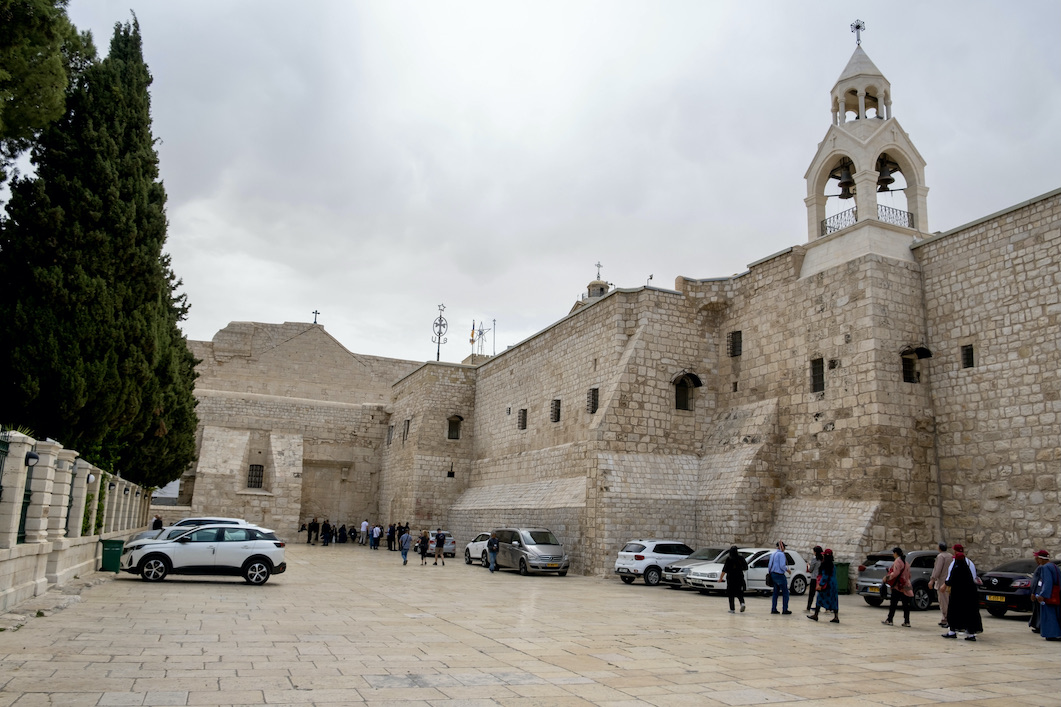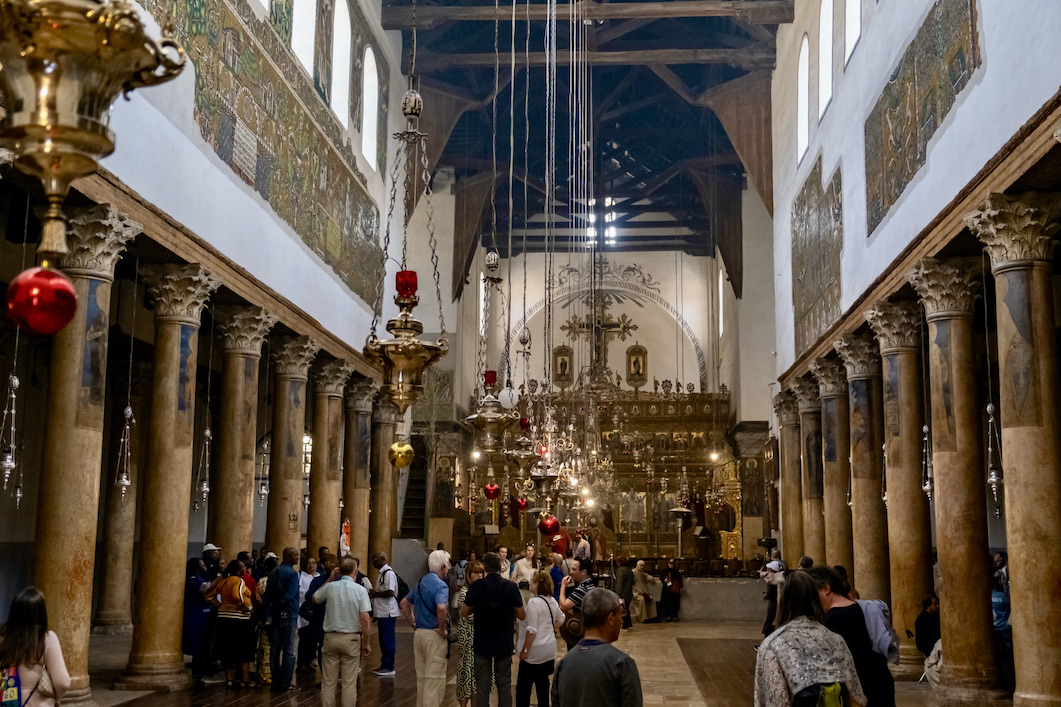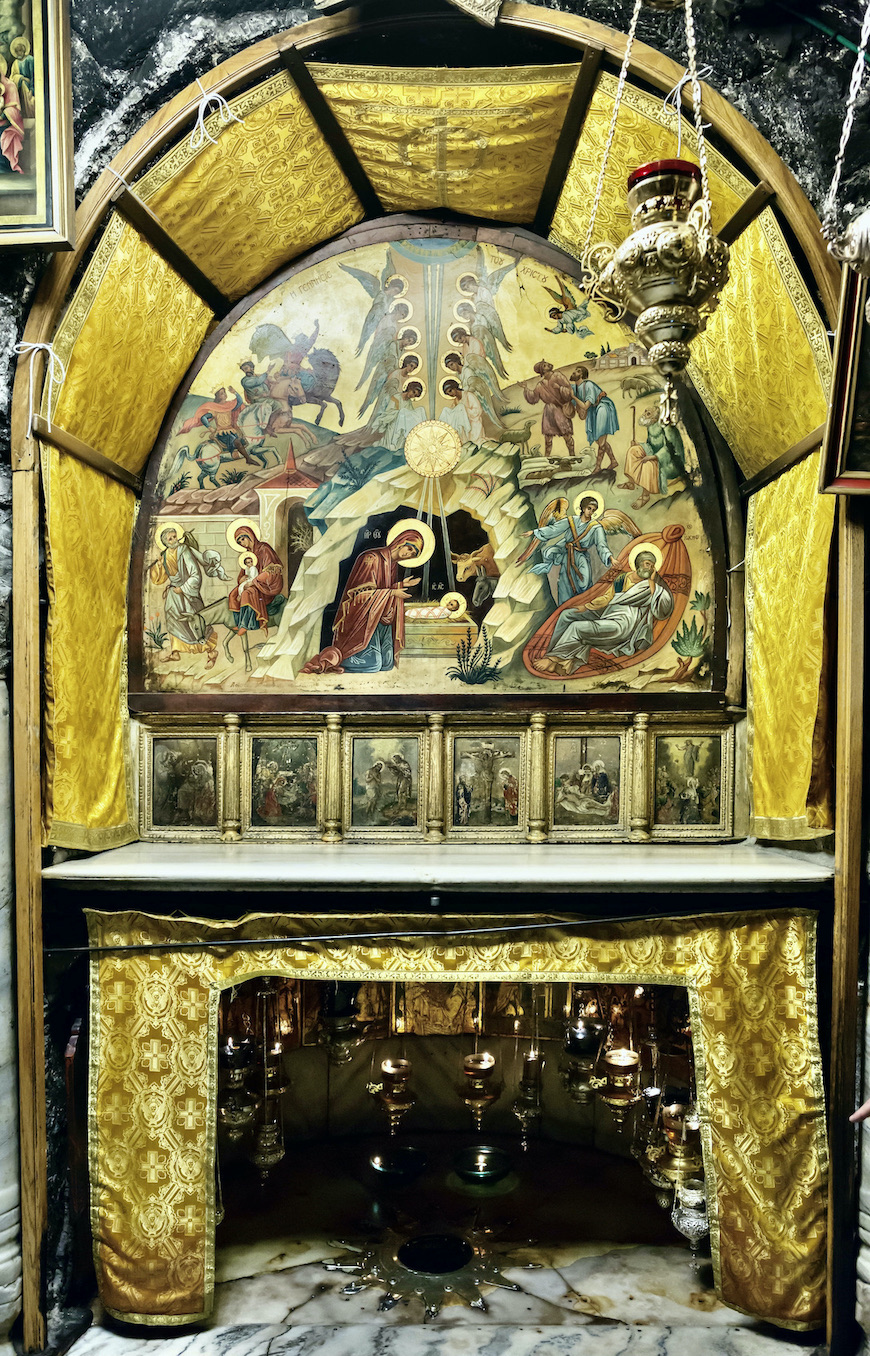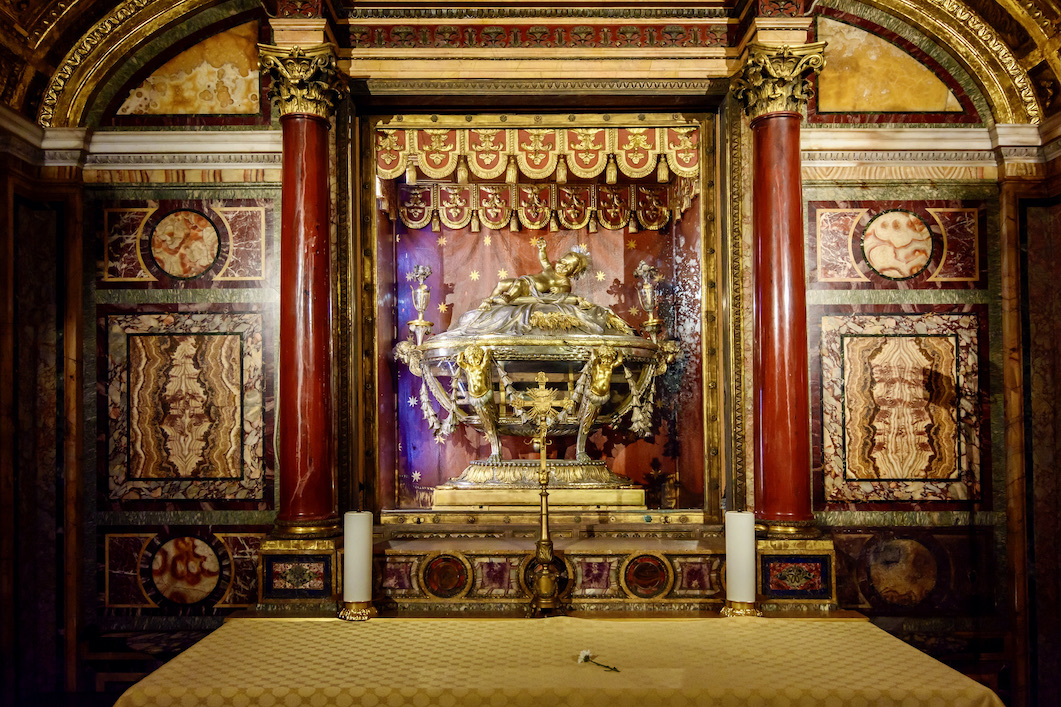
The crib or manger, central to Christian tradition, is the place where the infant Savior was laid after His birth. Historically, it was part of a stable or grotto where food for animals was placed, likely carved from the same material as the grotto itself. A longstanding tradition recounts that an ox and an ass were present at Christ’s birth, drawing symbolic significance from Isaiah 1:3: “The ox knows its owner, and the donkey its master’s crib.” This imagery is further supported by the words of the Prophet Habakkuk (3:2) in the Septuagint version: “In the midst of two animals, Thou shalt be known.” These traditions have shaped devotion to the Nativity scene and solidified its place in Christian worship.

Bethlehem, the site of Christ’s birth, is situated on two hills, 2,361 feet above sea level. The western hill is the Bethlehem referenced in Scripture, while the eastern hill houses the Basilica of the Nativity, built over the birthplace of Christ. As written in the Bible, Mary and Joseph, unable to find room at the inn, sought refuge in a cave on the eastern hill, which served as a shelter for shepherds and their flocks. The authenticity of the grotto has been upheld by ancient and unbroken traditions, with early ecclesiastical writers like St. Justin Martyr and Origen affirming it as the site of Christ’s birth. St. Helena, mother of Emperor Constantine, converted the grotto into a chapel in the 4th century, adorning it with costly marble and precious ornaments. Constantine further enhanced the site, constructing the first basilica over the grotto. Despite centuries of war and invasions necessitating numerous restorations, the Basilica of the Nativity remains a revered holy site. Beneath the basilica lies the Crypt of the Nativity, where a silver star marks the spot of Christ’s birth, inscribed with the words: HIC DE VIRGINE MARIA JESUS CHRISTUS NATUS EST (“Here Jesus Christ was born of the Virgin Mary”). Nearby, the manger where Christ was laid and adored by the Magi has been venerated for centuries.

The Basilica of the Nativity becomes the focal point of global Christian celebrations during Christmas. On Christmas Eve, festivities begin with a grand procession led by the Latin Patriarch of Jerusalem, accompanied by clergy and choirs. The Pontifical Midnight Mass, held in the basilica, draws local Christians, pilgrims, and dignitaries and is broadcast worldwide. During the Mass, hymns and prayers recount the Nativity story, and the faithful participate in the Eucharist. On Christmas Day, additional Masses are held throughout the day in the basilica’s various chapels, reflecting the Armenian, Greek Orthodox, and Catholic traditions. These celebrations are marked by prayers, hymns, and processions that honor the birth of Christ. Pilgrims who wish to attend these sacred events must plan well in advance due to the high demand. Tickets for Midnight Mass are typically distributed through the Latin Patriarchate of Jerusalem or local parishes. Pilgrims are advised to arrive early, arrange transportation, and follow local guidelines to ensure a meaningful experience.

Relic of Holy Cradle in Santa Maria Maggiore Basilica, Rome, Italy
Relics of the crib have been brought to Rome in the 7th century by Pope Theodore, are preserved at St. Mary Major’s Basilica. These relics, consisting of sycamore wood from the Holy Land, served as supports for the manger. Today, they are housed in an ornate reliquary and are exposed for veneration annually on Christmas Eve. St. Mary Major’s Basilica, originally known as Sancta Maria ad Praesepe, continues to draw faithful pilgrims from around the world.
Devotion to the crib has ancient origins but was popularized by St. Francis of Assisi in 1223 when he introduced the first scenic representation of the Nativity at Greccio. With the Pope’s blessing, St. Francis created a crib surrounded by figures of Mary, Joseph, the shepherds, an ox, and a donkey, bringing the Nativity story to life. This tradition inspired widespread devotion, and today, cribs are displayed in Catholic churches worldwide during the Christmas season. One notable example is the Santo Bambino di Ara Coeli, a wooden figure of the newborn Christ housed in Rome. Adorned with jewels, this figure is carried in a grand procession on Epiphany, symbolizing the universal reverence for the Savior’s birth.
The Basilica of the Nativity, a UNESCO World Heritage Site, stands as a profound symbol of Christ’s birth. Its rich history, coupled with its role as a place of pilgrimage and celebration, continues to inspire awe and devotion among Christians worldwide, especially during the sacred celebrations of Christmas.
-Thérèse-Marie-
